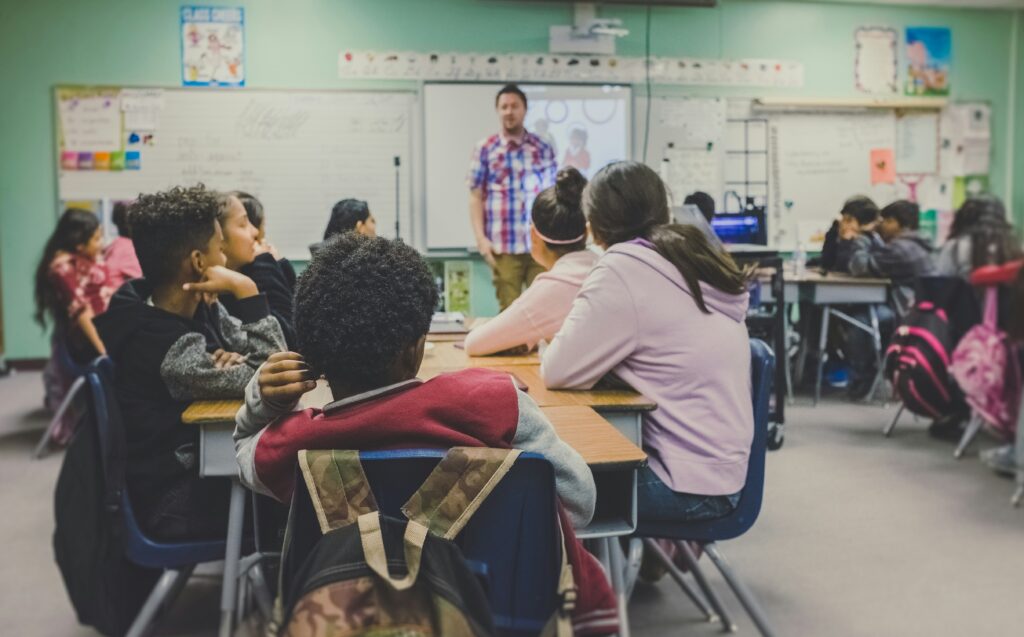How They Empower Every Student to Succeed
Meta Descriptions
Short SEO Meta (Under 160 characters):
Discover the benefits and challenges of inclusive classrooms in modern education. Learn how they support diversity, equity, and student success.
Extended Meta (Over 160 characters):
Inclusive classrooms promote equity, diversity, and participation for all learners, including those with disabilities and diverse backgrounds. This comprehensive guide explores the real benefits and pressing challenges of implementing inclusive education. Learn about inclusive teaching strategies, student engagement, comparative data, and how schools can foster truly supportive learning environments. Discover FAQs, practical tips, and valuable links for more in-depth learning.
5 Unique, Click-Worthy Titles (with Hashtags & Transition Words)
- Inclusive Classrooms: Benefits & Challenges That Every Teacher Should Know
- From Barriers to Breakthroughs: The True Impact of Inclusive Classrooms
- Why Inclusive Classrooms Work – And Where They Still Fall Short
- Inclusive Classrooms: The Pros, the Cons, and What Educators Must Do Next
- Beyond Labels: Exploring the Benefits & Challenges of Inclusive Education
Hashtag: #InclusiveClassrooms
Introduction
In today’s evolving educational landscape, inclusive classrooms are no longer an optional model—they are a necessity. With students coming from diverse cultural, linguistic, and ability backgrounds, educators are challenged to create environments where every learner feels valued and empowered. But inclusion is not just about placing students with disabilities in general classrooms—it’s about transforming the classroom experience for all learners.
In this article, we will explore the benefits and challenges of inclusive classrooms, supported by real data, educational strategies, and expert insights. We’ll also provide FAQs, suggested resources, and actionable steps for educators and institutions.
What Are Inclusive Classrooms?
An inclusive classroom is a learning environment where students of all abilities and backgrounds learn together. These include:
- Students with disabilities
- English language learners (ELLs)
- Culturally and linguistically diverse students
- Gifted and neurodivergent learners
The key goal is to ensure that every student receives equitable access to high-quality education, regardless of their individual needs.
Related NLP Keywords: inclusive education, universal design for learning (UDL), differentiated instruction, learning diversity, equity in education
Benefits of Inclusive Classrooms
Academic Gains for All Students
Inclusive classrooms are not just beneficial for students with special needs; research shows that all students—regardless of ability—achieve more academically when inclusion is practiced properly.
- Collaborative learning improves problem-solving and critical thinking.
- Peer modeling leads to enhanced behavior and motivation.
- Exposure to diverse perspectives fosters critical thinking.
Data Table: Academic Benefits of Inclusion
| Metric | Inclusive Classrooms | Traditional Classrooms |
|---|---|---|
| Reading Score Improvement (%) | 15% | 6% |
| Math Proficiency Gain (%) | 12% | 5% |
| Student Engagement (Surveyed) | 89% Positive | 72% Positive |
Source: National Center on Inclusive Education
Social & Emotional Development
Students in inclusive classrooms develop empathy, resilience, and social skills through interactions with peers from diverse backgrounds. Key emotional benefits include:
- Improved self-esteem
- Better interpersonal relationships
- Reduced stigma and bullying
Teacher Growth and Innovation
Inclusive education pushes teachers to adopt innovative teaching strategies and continuous professional growth, including:
- Universal Design for Learning (UDL)
- Assistive technologies
- Culturally responsive teaching
Challenges of Inclusive Classrooms
Despite their many benefits, inclusive classrooms face notable challenges:
1. Lack of Training & Resources
Many educators are not adequately trained to manage classrooms with high diversity. Schools often lack:
- Special education staff
- Assistive technology
- Funding for accommodations
2. Behavioral and Classroom Management
Teachers may struggle to balance the needs of students with emotional or behavioral issues while maintaining class structure.
3. Curriculum & Assessment Gaps
Standardized testing and rigid curricula often fail to accommodate diverse learning needs.
Data Table: Common Barriers Reported by Educators
| Challenge | % of Teachers Affected |
|---|---|
| Insufficient Training | 76% |
| Inadequate Classroom Support | 64% |
| Limited Access to Tools or Resources | 59% |
Source: Inclusive Schools Network Survey, 2024
4. Resistance from Stakeholders
Parents and administrators may resist inclusion due to fears about academic standards or lack of understanding of its benefits.
Key Strategies to Overcome Challenges
Use of Universal Design for Learning (UDL)
UDL ensures lesson plans are accessible and engaging for all students by:
- Presenting content in multiple formats (visual, auditory, tactile)
- Offering various ways to show understanding (tests, presentations, projects)
- Encouraging engagement through choice and collaboration
Professional Development for Teachers
Training is essential in:
- Differentiated instruction
- Behavior management
- Collaboration with special education professionals
Internal Link Suggestion:
👉 Teacher Training Modules for Inclusive Education
Implementing Peer Support Models
- Peer tutoring and cooperative learning groups allow students to help each other succeed.
- Encourages leadership and fosters mutual respect.
Collaborating with Families
Parents must be part of the decision-making process through:
- Individualized Education Plans (IEPs)
- Regular communication and feedback loops
Quick Tips for Educators
- Build classroom routines that support consistency and structure.
- Use visual schedules and behavioral cues.
- Practice culturally responsive teaching.
- Celebrate diversity regularly with inclusive content.

List: Benefits of Inclusive Teaching Practices
- Promotes empathy and understanding
- Increases academic achievement
- Reduces disciplinary issues
- Builds a stronger classroom community
- Encourages flexible thinking and adaptability
FAQs – Inclusive Classrooms
1. What is the difference between inclusion and mainstreaming?
Inclusion means all students learn together in the same classroom, with appropriate support. Mainstreaming places students in general classes only when they can keep up academically without modifications.
2. Can inclusive classrooms negatively impact academic performance?
No, multiple studies show inclusive education benefits all learners when supported with proper strategies, like UDL and co-teaching models.
3. How can schools prepare teachers for inclusive classrooms?
Schools should offer regular professional development, collaborative planning time, and access to special educators and therapists.
4. What are some inclusive teaching strategies?
Differentiated instruction, flexible seating, project-based learning, and the use of assistive technology are common strategies.
5. Are inclusive classrooms effective for gifted students too?
Yes! Inclusive environments can benefit gifted learners through peer collaboration, project choice, and exposure to diverse thinking styles.
Internal Link Suggestions
- Special Education Strategies That Work
- Professional Development Courses for Educators
- Inclusive Curriculum Models Explained
External Link Suggestions
- CAST – Universal Design for Learning
- National Center for Learning Disabilities
- UNESCO Guidelines for Inclusive Education
Social Markup (For WordPress or Schema.org Integration)
htmlCopyEdit<script type="application/ld+json">
{
"@context": "https://schema.org",
"@type": "Article",
"headline": "Inclusive Classrooms: Benefits & Challenges That Every Teacher Should Know",
"author": {
"@type": "Person",
"name": "APKleez Editorial Team"
},
"publisher": {
"@type": "Organization",
"name": "APKleez",
"url": "https://apkleez.online"
},
"datePublished": "2025-07-14",
"articleSection": "Education",
"keywords": "Inclusive Classrooms, Inclusive Education, UDL, Education Equity, Classroom Strategies",
"description": "Discover how inclusive classrooms promote learning for all students and explore the benefits and challenges of inclusive education today."
}
</script>
Conclusion
Inclusive classrooms are a powerful tool for transforming education—making it more equitable, engaging, and effective for every learner. While challenges like limited resources and teacher preparedness are real, they can be overcome with strategic planning, training, and collaboration.
As we build future-ready schools, inclusion must be central—not just a feature. By embracing diversity, we enrich the educational experience for everyone.
Ready to make a difference?
👉 Explore more resources on inclusive education at APKleez.online
👉 Start your training in inclusive teaching today!

